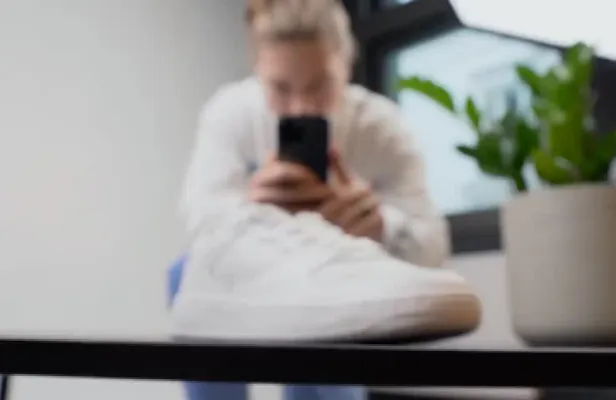Creating a mood board for interior design: This is how it works

Whether for planning a new apartment, designing a house or developing marketing campaigns — a mood board is an indispensable tool in interior design. It helps to visualize creative ideas, convey moods and create a uniform design language.
What is a mood board and why is it important for interior design?
A mood board is a visual collage of images, textures, colors, and materials that serves to bundle design ideas and communicate them clearly. In interior design, a mood board not only supports creative development, but also collaboration between designers, customers and other stakeholders. It is the first step towards making abstract ideas tangible.
A mood board ensures:
- Clear visual orientation.
- Better communication of design visions.
- Minimize misunderstandings during implementation
The importance of a mood board is particularly evident in complex projects where many design elements must work together harmoniously. A successful example of strategic deployment can be found in our article on Interior design concepts and visualizations.
Benefits of a mood board for interior design projects
A mood board is not only an aesthetic tool, but also a functional one. It supports decision-making and provides clear direction for the entire project.
Create a uniform visual language for homes and apartments
A mood board helps to develop a consistent design language for different rooms. Whether living room, kitchen or bedroom — the goal is a harmonious overall picture that combines all areas. Especially when designing entire houses or apartments, a mood board can help to make individual rooms feel part of a larger concept.
If you're interested in popular interior design styles, check out our article about The 9 most popular interior design styles on.
Step-by-step guide: How to create a mood board for interior design
Creating a mood board requires planning and a structured approach. With the following steps, you'll create a mood board that not only looks nice but is also functional.

Define objectives and concept
Before you start creating a mood board, the design goals must be clearly defined:
- What mood should be conveyed?
- Should the mood board appeal to a specific target group?
- Which design styles or materials should be the focus?
Define a clear concept to determine the common thread of design.
Materials and tools for creating mood boards
Choosing the right tools and materials is crucial. For physical mood boards, the following are suitable:
- periodicals
- fabric samples
- color fans
Platforms such as Pinterest, Miro, Canva or Adobe Express are available for digital mood boards, which make it easy to collect and arrange images.
Collect and structure inspiration
The best sources of inspiration include:
- Pinterest and Instagram
- Trade magazines such as Architectural Digest
- Moodboard-specific platforms
Collect images, colors, and textures that reflect the design vision, and organize them by theme or mood.
Select color palettes and textures
The right choice of colors is crucial to create a specific atmosphere. Use color charts or digital tools to find harmonious combinations. Complement the colors with matching textures to make the mood board look more lively.
Arrange items on the mood board
Now comes the creative part: arrange your or your collected elements so that they clearly convey the desired mood and design language. Make sure that central themes are clearly visible and that the arrangement is aesthetically appealing.
Examples: mood boards for apartments and houses
Mood boards can be used in a variety of ways — from the overall design of a house to the furnishing of individual rooms. Here are a few inspiring examples:
- Scandinavian-style apartment
A mood board with muted colors, natural materials such as wood and simple textures helps to convey the minimalistic yet warm style of Scandinavian design. - luxurious bathroom
Dark color palettes combined with shiny materials such as marble and gold create a luxurious atmosphere. For detailed examples, have a look at our Interior visualization for bathrooms. - Modern house with loft character
Combinations of concrete look, glass and industrial elements such as metal frames can be harmoniously displayed with a mood board to accentuate the modern character.
Conclusion: Your mood board is the key to successful interior design
A mood board is more than just a collage — it is a key tool that helps to visualize design concepts, simplify decisions and bring everyone involved on a common line. Whether for the apartment, the house or specific marketing purposes, a well-thought-out mood board provides the basis for a successful project.
Creating a mood board means being creative but also working in a structured way.
It's worth investing the time in planning and implementation, because the result will not only make things easier for you and your team, but will also deliver impressive results.
FAQ about creating a mood board for interior design
1. What is the main purpose of a mood board in interior design?
A mood board is used to create a clear visual direction, to bundle design ideas and to facilitate communication between designers and customers.
2. Which tools are suitable for creating a digital mood board?
Platforms such as Pinterest, Canva, or Adobe Express are ideal for creating digital mood boards. They offer easy-to-use features to gather inspiration and arrange them in an appealing way.
3. How does a mood board help with the design of an apartment?
A mood board helps to develop a uniform design language for different rooms and ensures that colors, materials and styles are harmoniously coordinated.
Make yours Product digitization more efficient
We help companies digitize product portfolios with hundreds of items. Our workflows are tailored to your company and ensure maximum output with minimal effort.









